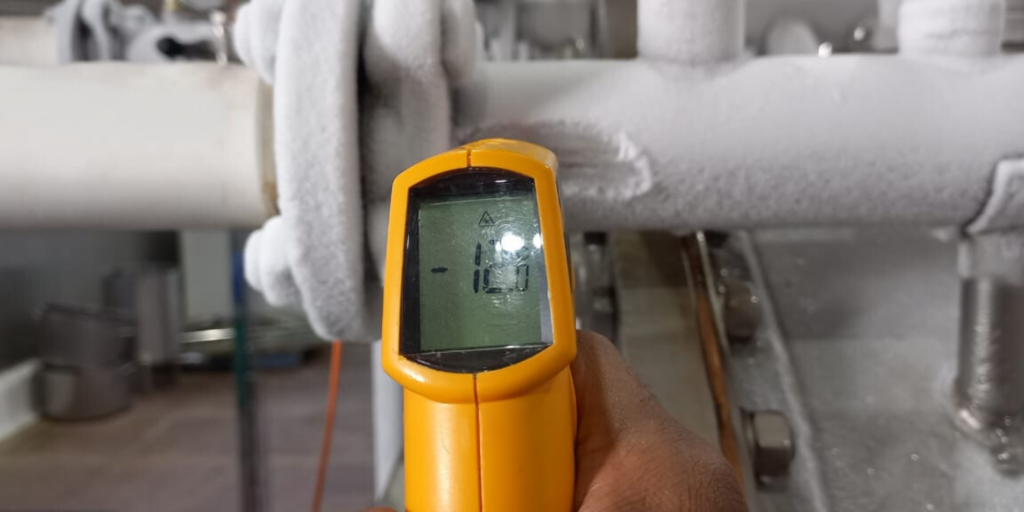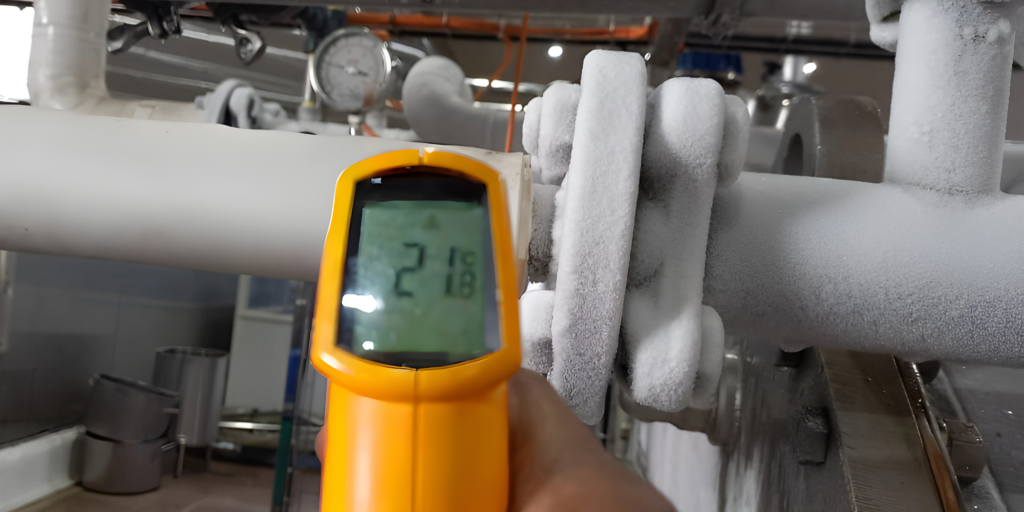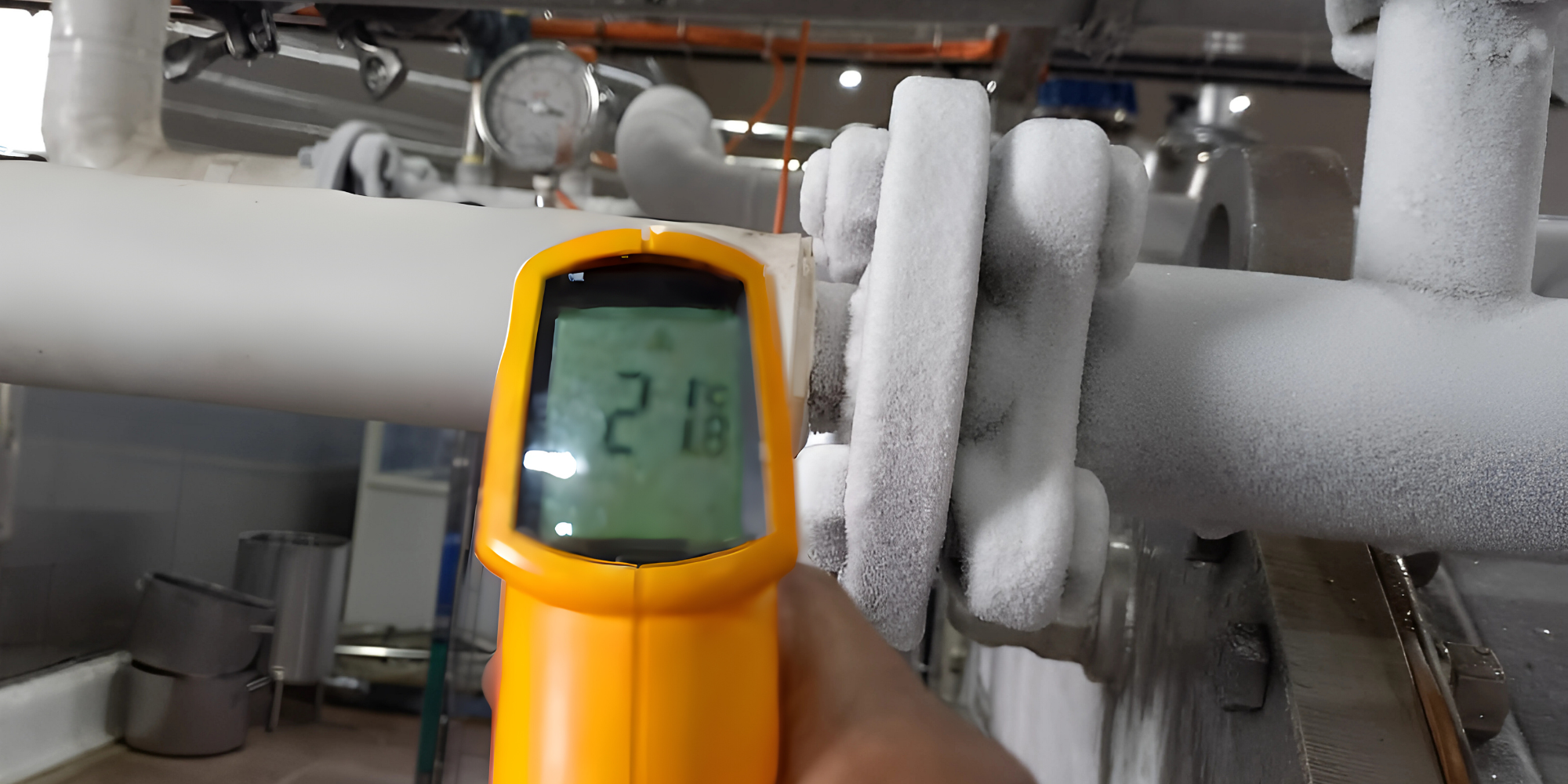Improving Safety & Efficiency in Ammonia Refrigeration lines
Published
February 12, 2025
Sectors
Introduction
A leading India-based food processing company, exporting mango pulp and frozen food products to Belgium, Germany, and France, relies on ammonia refrigeration (-12°C) to rapidly cool mango pulp before packaging. However, with no insulation on the ammonia lines this led to ice build up, safety hazards, and energy inefficiencies, prompting the company to seek a more effective solution.

Challenges
The facility faced several critical issues due to uninsulated ammonia pipes:
- Frozen pipe surfaces – Uninsulated pipes were covered in ice, creating a slip hazard and increasing the risk of accidental contact injuries for workers.
- Condensation & hygiene concerns – Ice buildup led to water drips, raising the risk of contamination in the food processing environment.
- Energy inefficiency – Excessive heat gain forced refrigeration systems to work harder, resulting in higher operational costs.
Solution
To eliminate these risks, the company installed 12.7mm thick T-FIT® Hygiene insulation on the ammonia lines. This advanced insulation system provided:
- Increased surface temperature – Raised the pipe surface temperature to 21°C, eliminating condensation formation.
- Enhanced safety – Prevented frozen pipe surfaces, reducing the risk of slips, falls, and contact burns.
- Energy efficiency – Reduced heat gain, optimising refrigeration performance and lowering energy consumption.
- Hygienic and durable solution – The closed-cell, non-absorbent structure of T-FIT Hygiene prevented microbial growth and required minimal maintenance.

Results
The installation of T-FIT Hygiene Insulation transformed the facility’s refrigeration performance, improving both efficiency and safety. By eliminating frozen pipe surfaces, the risk of workplace injuries due to slips and accidental contact burns was significantly reduced, creating a safer environment for workers. The insulation also prevented condensation-related hygiene risks, ensuring compliance with strict food safety regulations. In addition, refrigeration units operated more efficiently due to the reduced heat gain, leading to lower energy consumption and long-term cost savings. The durability and easy maintenance of T-FIT Hygiene further contributed to the facility’s operational efficiency, providing a long-lasting solution that supports both productivity and product quality.
